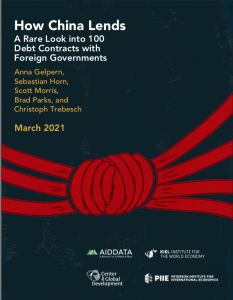Join getAbstract to access the summary!

Join getAbstract to access the summary!
Anna Gelpern, Sebastian Horn, Scott Morris, Brad Parks and Christoph Trebesch
How China Lends
A Rare Look into 100 Debt Contracts with Foreign Governments
Center for Global Development, 2021
What's inside?
China, the world’s largest creditor, lends to nations on opaque and seemingly political terms.
Recommendation
China’s portfolio of loans to lesser developed nations puts it at the top of the list of global creditors. Ensuring repayment has led it to include terms advantageous to the lender but onerous to the borrower, as researchers Anna Gelpern, Sebastian Horn, Scott Morris, Brad Parks and Christoph Trebesch found in this cogent analysis. China’s outsized role in sovereign credit provision – and its political motivations – only underscore the overall need for more transparency in sovereign lending. Financial professionals and foreign policy students will find this an illuminating report.
Summary
About the Authors
Anna Gelpern is a professor at Georgetown Law. Sebastian Horn and Christoph Trebesch are economists at the Kiel Institute for the World Economy. Scott Morris is a senior fellow at the Center for Global Development. Brad Parks is the executive director of AidData at the College of William and Mary.























Comment on this summary